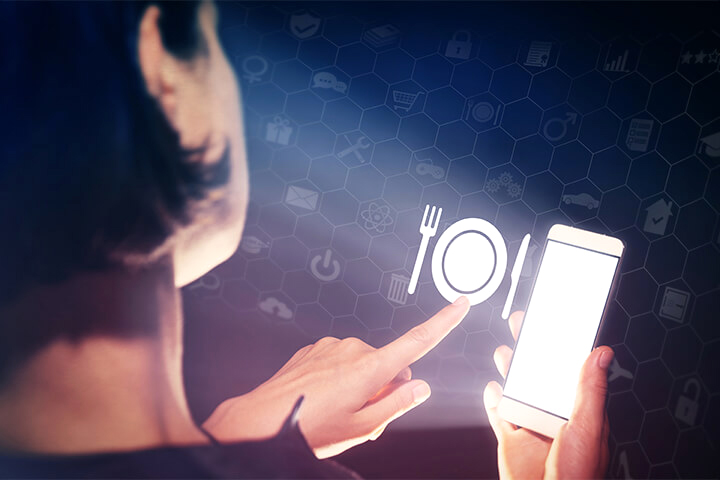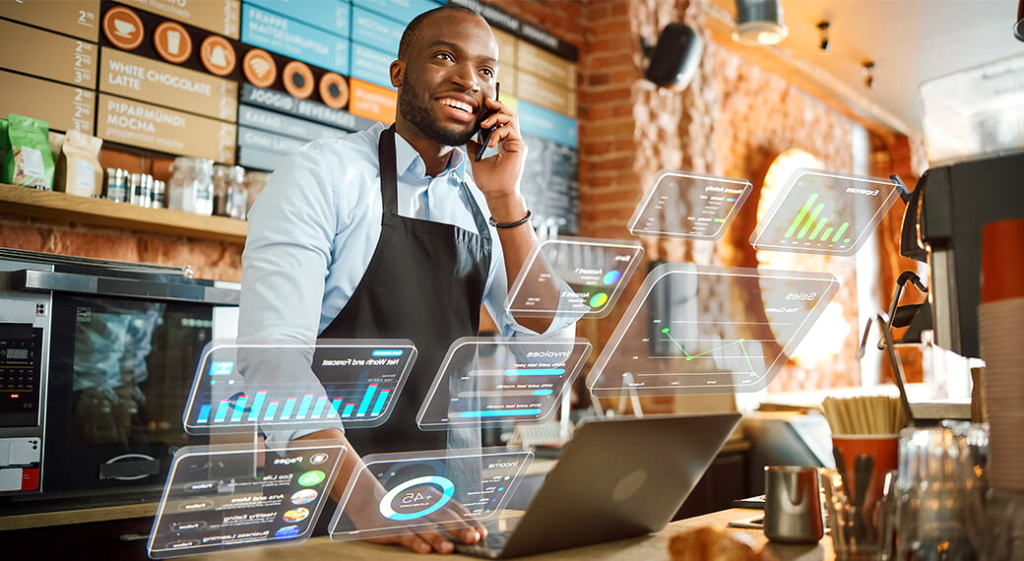The foodservice industry is constantly seeking new ways to improve efficiency and enhance the customer experience to, ultimately, increase profitability. Now, artificial intelligence (AI) has emerged as a powerful tool for restaurants, offering a range of solutions that address these needs. In this article, we present an overview of the ways operators are using AI. We hope this information helps you decide if integrating AI technology would be an advantage for your establishment.
Implementing AI Effectively in Your Foodservice Business
While this technology offers a wealth of potential benefits, we must remember that it’s a tool, and successful implementation requires careful consideration. Some best practices foodservice businesses should remember are as follows:
- Identify Specific Needs: Clearly define goals and challenges before deploying AI solutions.
- Data Quality: Ensure data collection and integration are robust to avoid skewed results and inaccurate insights.
- Human-AI Collaboration: Use this technology to augment human expertise, not replace it. Skilled staff remains essential for decision-making and customer interaction.
Next, we’ll provide an overview that show the ways this technology is being used to assist in customer engagement, operations management, marketing, menu optimization, and more.
Personalized Customer Engagement Using AI

AI can analyze vast amounts of data to personalize recommendations and promotions with accuracy and efficiency.
Menu Personalization
Consumers ubiquitously crave a good deal and now, AI can assist with precision. Algorithms can analyze customer data, including past orders, preferences, and dietary restrictions, to recommend tailored menu items and personalized discounts. For example, a restaurant can recommend pairings based on a customer’s chosen entree, suggesting a specific wine or dessert with a high profit margin.
Dynamic Pricing
Because AI can analyze real-time data like customer demand, weather, and competitor pricing, restaurants are now free to implement dynamic pricing, adjusting prices slightly based on peak hours, specific days, or even customer demographics to maximize revenue while maintaining competitiveness.
Chatbots and Virtual Assistants
AI-powered chatbots can handle routine inquiries, reservations, and even order modifications, freeing up staff for more complex tasks. Additionally, virtual assistants equipped with voice recognition can personalize the ordering process, allowing customers to place orders through voice commands, further enhancing convenience and potentially increasing order value through natural upselling prompts.
Streamlined Operations & Cost Reduction With AI

AI-powered systems can analyze sales data to predict demand, optimize inventory management, and even automate tasks like scheduling and order routing.
Predictive Inventory Management
Some technology offers operators the gift of foresight. AI can analyze historical sales data, seasonality, and food trends to forecast demand for ingredients, enabling restaurants to optimize inventory levels, minimize food waste, and reduce purchasing costs. Additionally, this technology can automatically generate purchase orders based on predicted needs, which streamlines the procurement process, and ensures a consistent supply of essential ingredients.
Automated Scheduling and Labor Optimization
Looking for a better way to manage your staff schedules? AI can analyze historical sales data, along with traffic patterns and weather forecasts, to predict peak hours and staffing needs. This allows for the creation of data-driven employee schedules, ensuring adequate staffing during busy periods and avoiding overstaffing during slower times. Schedule optimization reduces labor costs, a significant expense for restaurants.
Smart Kitchen Management Systems
Even an all-star BoH team could benefit from additional efficiency measures. AI-powered kitchen management systems can optimize cooking processes and improve efficiency. These systems can predict cook times, track ingredient usage, and even alert chefs to potential equipment malfunctions, leading to faster service times, reduced food waste, and improved kitchen workflow.
Using AI in Data-Driven Marketing & Targeted Advertising

Data-driven marketing and targeted advertising increases the effectiveness of marketing campaigns and drives sales. AI can analyze vast amounts of data much faster than humans, uncovering hidden trends and customer preferences.
Customer Segmentation and Targeting
AI can help you really get to know your customers by analyzing guest data to segment audiences based on demographics, preferences, and ordering behavior. Using this data, restaurants can create targeted marketing campaigns, sending personalized promotions and offers through email, social media, or mobile apps. For example, targeting customers with a history of ordering specific dishes with limited-time discount offers on similar items may incentivize repeat visits and increase revenue.
Sentiment Analysis and Reputation Management
One bad review can hold a lot of sway over other consumers and affect how others perceive your business. To counter this phenomenon, AI can analyze online reviews and social media mentions to gauge customer sentiment and identify areas for improvement. This allows restaurants to proactively address negative feedback and implement changes to enhance customer satisfaction, ultimately leading to positive brand reputation and attracting new customers.
Enhanced Food Quality & Menu Optimization With AI

Ensuring delicious, consistent dishes while streamlining menus for profitability has become an AI game-changer.
Menu Engineering
Let AI do the math for you. New technology can analyze sales data and customer preferences to identify the most popular and profitable menu items. By understanding which dishes generate the highest margins, restaurants can adjust their menus and potentially introduce new, data-driven offerings with higher profit potential.
Recipe Optimization & Food Cost Analysis
Rising food costs have created challenges for the foodservice industry at large. To assist, AI can analyze recipe data and ingredient costs to identify areas for cost-saving opportunities. Foodservice establishments use this information to optimize recipes and portion sizes which help maintain healthy profit margins.
Is AI the Solution You’ve Been Looking For?
Integrating AI into your foodservice operations has the potential to provide insights into customer behavior, more efficient operations, and opportunities for bottom-line growth. What is your stance on integrating AI into your bar, café, or restaurant? Let us know in the comment section!



